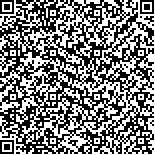| 引用本文: |
张逢,戴宗顺,林也,蔡雄,宋厚盼,陈聪,廖菁.“风寒湿”外邪影响Th17/Treg失衡促进类风湿关节炎病证发生的分子机制研究[J].湖南中医药大学学报,2021,41(11):1657-1662[点击复制] |
|
| |
|
|
| 本文已被:浏览 3414次 下载 1715次 |
| “风寒湿”外邪影响Th17/Treg失衡促进类风湿关节炎病证发生的分子机制研究 |
| 张逢,戴宗顺,林也,蔡雄,宋厚盼,陈聪,廖菁 |
| (湖南中医药大学湖南省中药粉体与创新药物省部共建国家重点实验室培育基地, 湖南 长沙 410208;湖南中医药大学中医方证转化医学研究湖南省重点实验室, 湖南 长沙 410208) |
| 摘要: |
| 目的 探讨Th17/Treg细胞在类风湿关节炎(痹证)中的表达情况及“风寒湿”外邪影响痹证发生的分子机制。方法 (1)雄性SD大鼠90只,随机分为正常对照组、单纯佐剂性关节炎(AIA)组和AIA风寒湿痹组,每组30只。正常对照组和单纯AIA组大鼠正常饲养;AIA风寒湿痹组每天置于人工智能气候箱内接受风寒湿刺激,14 d后单纯AIA组和AIA风寒湿痹组免疫含有热灭活结合杆菌的完全弗氏佐剂(CFA);AIA风寒湿痹组CFA免疫后风寒湿再刺激6 d。各组动物CFA免疫前1天、免疫后第6、10天,分离外周血单核细胞(PBMCs),流式细胞术检测CD4+Th17和CD4+CD25+Foxp3+Treg细胞,分析Th17/Treg细胞比例。(2)雄性SD大鼠20只,随机分为正常对照组和AIA风寒湿痹组,每组10只。正常对照组和AIA风寒湿痹组大鼠的实验条件同(1)。CFA免疫后第14天麻醉大鼠,分离PBMCs,流式细胞术检测外周血CD4+T细胞pSTAT3蛋白、CD4+IL-17+淋巴细胞pSTAT4和pSTAT6的蛋白平均荧光强度,RT-PCR检测外周血CD4+T细胞中RORγt、Foxp3、STAT3、STAT4、STAT6 mRNA的表达。结果 随着AIA风寒湿痹大鼠病情的进展,外周血CD4+Th17细胞比例逐渐增加,CD4+CD25+Foxp3+Treg细胞比例逐渐降低,与同时间点单纯AIA组大鼠比较,差异具有统计学意义(P<0.05或P<0.01)。与正常对照组比较,AIA风寒湿痹组大鼠外周血CD4+pSTAT3+和CD4+IL-17+pSTAT4+及CD4+IL-17+pSTAT6+蛋白表达量显著增加,CD4+T细胞中Foxp3 mRNA表达量显著降低,而RORγt、STAT3、STAT4、STAT6 mRNA表达量显著增加,差异具有统计学意义(P<0.05或P<0.01)。结论 “风寒湿”外邪可能通过JAK/STAT信号通路激活Th17细胞分化,并抑制Treg细胞分化,导致Th17/Treg细胞失衡,从而促进RA病证的发生。 |
| 关键词: 类风湿关节炎 痹证 “风寒湿”外邪 Th17/Treg JAK/STAT信号通路 |
| DOI:10.3969/j.issn.1674-070X.2021.11.003 |
| 投稿时间:2021-03-16 |
| 基金项目:国家自然科学基金项目(81703920);湖南省自然科学基金项目(2018JJ2293、2019JJ40225);湖南省高校创新平台开放基金项目(17K069);湖南省中医药科研计划项目(201909);湖南中医药大学中医学国内一流建设学科项目(校行科字〔2018〕3号)。 |
|
| Mechanistic Studies of Th17/Treg Imbalance Influenced by Exogenous Wind-cold-damp Pathogens on the Development of Rheumatoid Arthritis |
| ZHANG Feng,DAI Zongshun,LIN Ye,CAI Xiong,SONG Houpan,CHEN Cong,LIAO Jing |
| (Hunan Key Laboratory of Chinese Medicine Powder and Innovative Drugs Established by Provincial and Ministry Training Bases, Hunan University of Chinese Medicine, Changsha, Hunan 410208, China;Hunan Provincial Key Laboratory of Translational Research in TCM Formulas and Zheng, Hunan University of Chinese Medicine, Changsha, Hunan 410208, China) |
| Abstract: |
| Objective To observe the molecular mechanism of "wind-cold-damp" (FHS) exogenous pathogenic factors and the expression of Th37/Treg cells on Bi syndrom (rheumatoid arthritis, RA). Methods (1) Ninety male SD rats were randomly and evenly assigned into normal control group, simple adjuvant-induced arthrtis (AIA) group and FHS+AIA group. Normal control group and simple AIA group were normally fed, and the FHS+AIA group was placed in an intelligent artificial climate box every day to receive FHS stimulation. After 14 days of FHS stimulation, rats in the simple AIA group and FHS+AIA group were injected complete Freud's adjuvant (CFA) containing heat-inactivated Mycobacterium tuberculosi to establish AIA. FHS+AIA group continued to receive FHS stimulation for additional 6 days. Peripheral blood mononuclear cells (PBMCs) were isolated 1 day before, 6 and 10 days after CFA immunization. Percentages of CD4+Th17 and CD4+CD25+Foxp3+Treg cells were detected by flow cytometry. (2) Twenty male SD rats were randomly and evenly assigned into normal control group and FHS+AIA group. The experimental conditions of rats in normal control group and FHS+AIA group were the same (1). On day 14 after CFA injection, rats were anesthetized and blood specimens were collected for isolation of PBMCs. Mean fluorescence intensity of pSTAT3 protein in CD4+T cells, pSTAT4 and pSTAT6 proteins in CD4+IL-17+T cells were detected and analyzed by flow cytometry, and mRNA expression levels of RORγt, Foxp3, STAT3, STAT4, and STAT6 in CD4+T cells were examined by RT-PCR. Results With the progression of the disease in FHS+AIA group of rats, the proportion of peripheral blood CD4+Th17 cells gradually increased, and the proportion of CD4+CD25+Foxp3+Treg cells gradually decreased, compared with the simple AIA group of rats at the same time point, the difference was statistically significant (P<0.05 or P<0.01). Compared with normal control group of rats, FHS+AIA group of rats showed significantly elevated fluorescent intensities of CD4+pSTAT3+, CD4+IL-17+pSTAT4+ and CD4+IL-17+pSTAT6+ proteins in the peripheral blood, markedly decreased mRNA level of Foxp3 and significantly increased mRNA levels of RORγt, STAT3, STAT4, and STAT6 detected in CD4+T cells, the difference was statistically significant (P<0.05 or P<0.01). Conclusion FHS exogenous pathogenic factors may activate the differentiation of CD4+Th17 cells and inhibit the differentiation of Treg cells through the JAK/STAT signaling pathway, leading to imbalance of Th17/Treg cells, thus promoting the occurrence of RA syndrome. |
| Key words: rheumatoid arthritis Bi syndrom wind-cold-damp exogenous pathogenic factors Th17/Treg JAK/STAT signaling pathway |
|

二维码(扫一下试试看!) |
|
|
|
|




